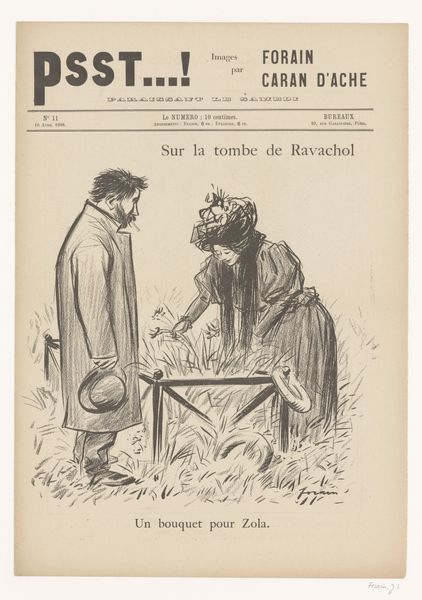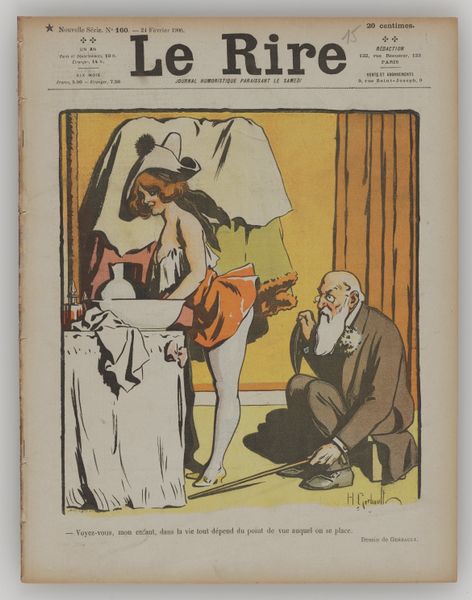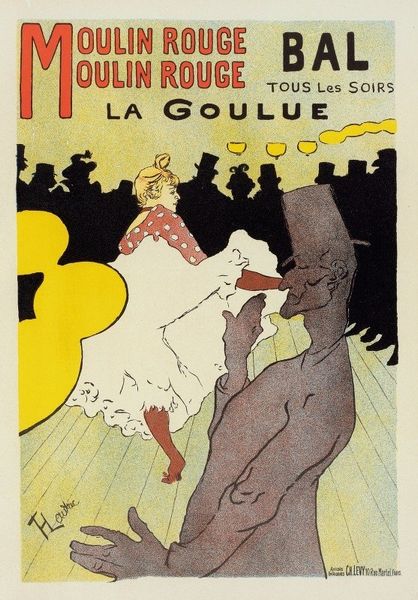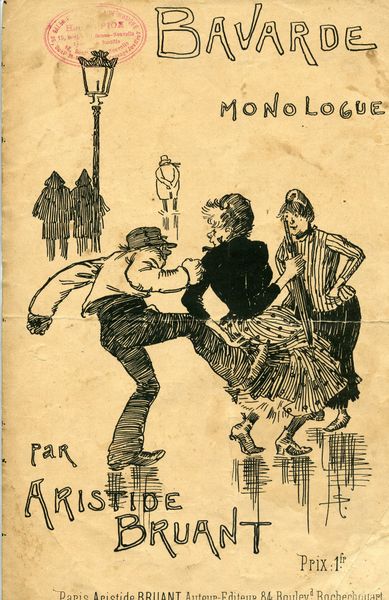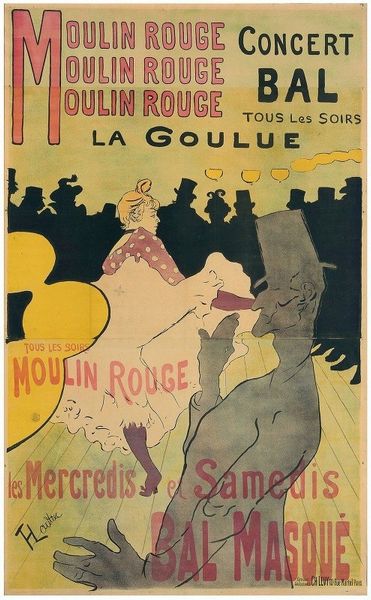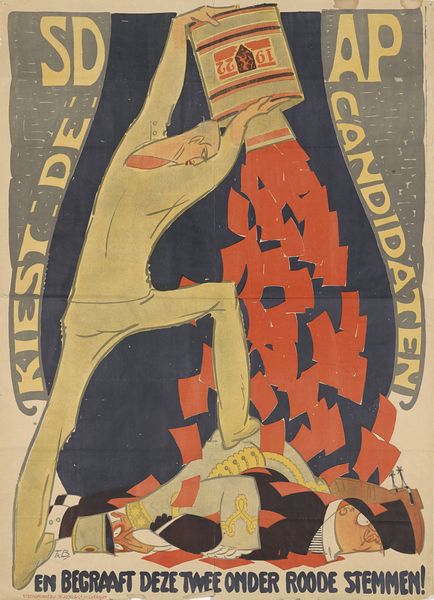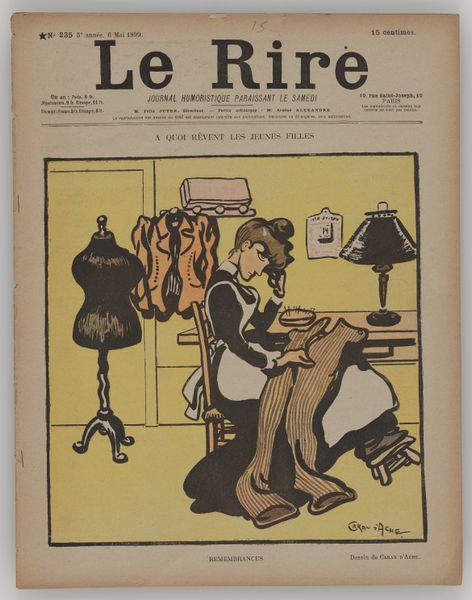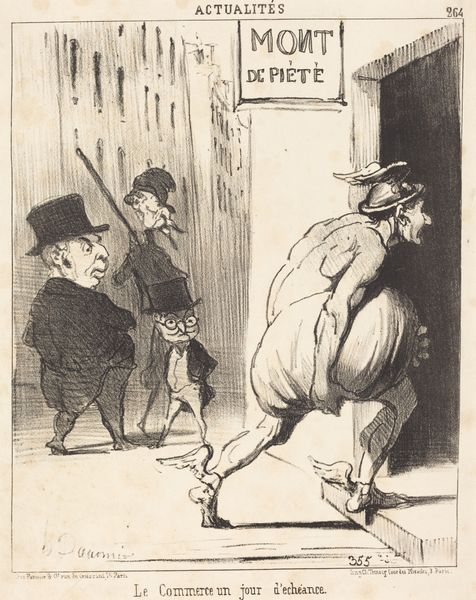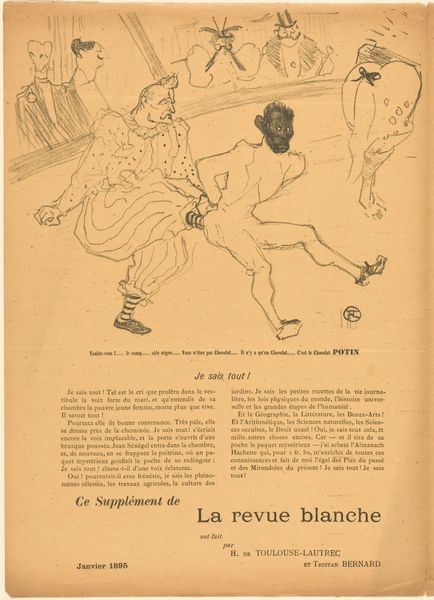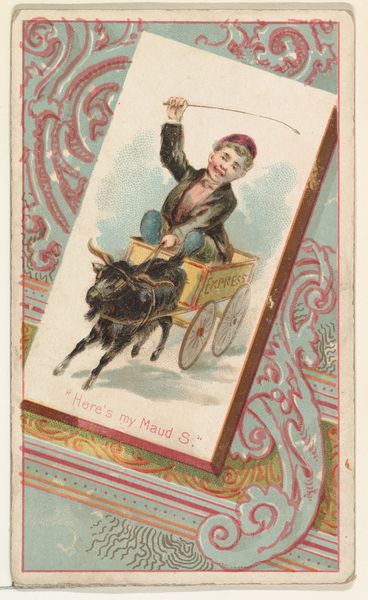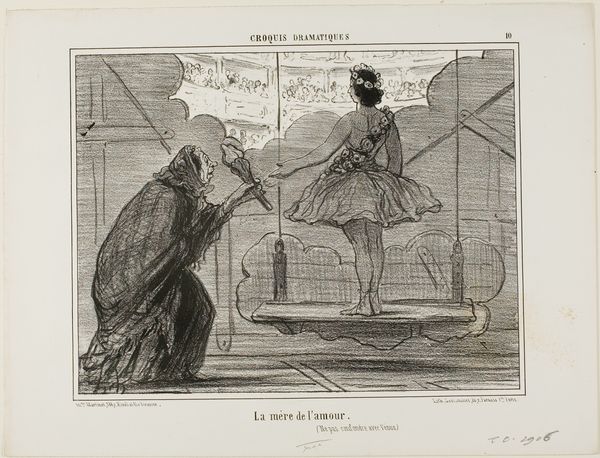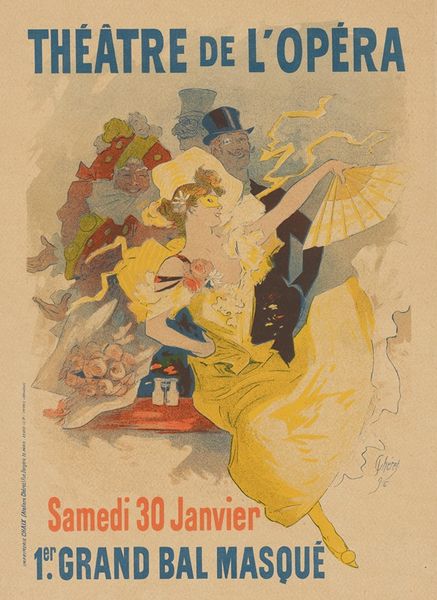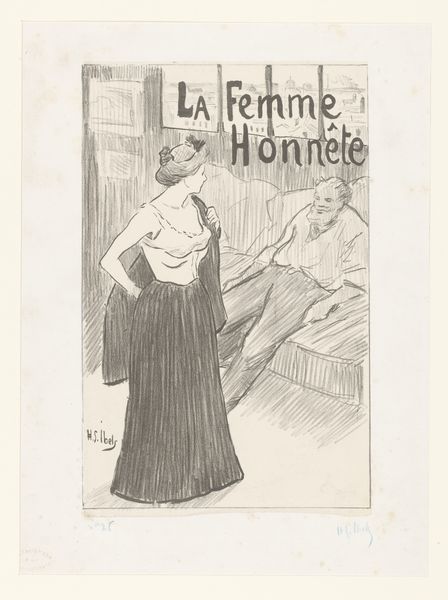
#
toned paper
#
blue ink drawing
#
personal sketchbook
#
ink drawing experimentation
#
ink colored
#
pen work
#
sketchbook drawing
#
watercolour illustration
#
sketchbook art
#
watercolor
Dimensions: sheet (program closed): 20 x 15.5 cm (7 7/8 x 6 1/8 in.) sheet (program opened): 20 x 31.1 cm (7 7/8 x 12 1/4 in.)
Copyright: National Gallery of Art: CC0 1.0
Editor: We’re looking at “Le Fardeau de la Liberté,” or “The Burden of Liberty,” an illustration by Henri de Toulouse-Lautrec from 1897. It looks like it’s ink and watercolor on paper, likely for a book cover or poster. I’m struck by how quickly it seems to have been rendered. It feels spontaneous and almost unfinished. What's your interpretation? Curator: It's fascinating to consider this piece through a materialist lens. We need to think about the materials used and the process of production within its historical and social context. This wasn't high art destined for a museum; it’s a commercial piece, meant to sell a product—Tristan Bernard's comedy. Editor: Right, so the materials - ink, watercolor, inexpensive paper - speak to its purpose as something mass-produced? Curator: Precisely! The choice of materials reflects the economics of book production at the time. The rapid execution, visible in the sketch-like quality, speaks to the time pressures Lautrec would have been under. He was a commercial artist, and time was money. The “burden” might well reflect on that labour itself, which is suggested by the material. What appears quick may well be incredibly laboured, with preparatory works that are now hidden. How are we meant to appreciate this piece, not as standalone art, but as a material and commercial transaction between the artist and his patrons? Editor: That’s a completely different perspective than I had! So instead of focusing solely on the artistic expression, we consider the physical object and the conditions of its creation as integral to its meaning? Curator: Absolutely! This helps us question traditional art boundaries. We begin to blur the lines between 'high' art and commercial design, challenging notions of artistic genius and recognizing the impact of economic forces. Editor: I hadn't thought about it that way. Considering the materiality and the process of its making definitely adds a layer of meaning I would have otherwise missed. Thanks!
Comments
No comments
Be the first to comment and join the conversation on the ultimate creative platform.
